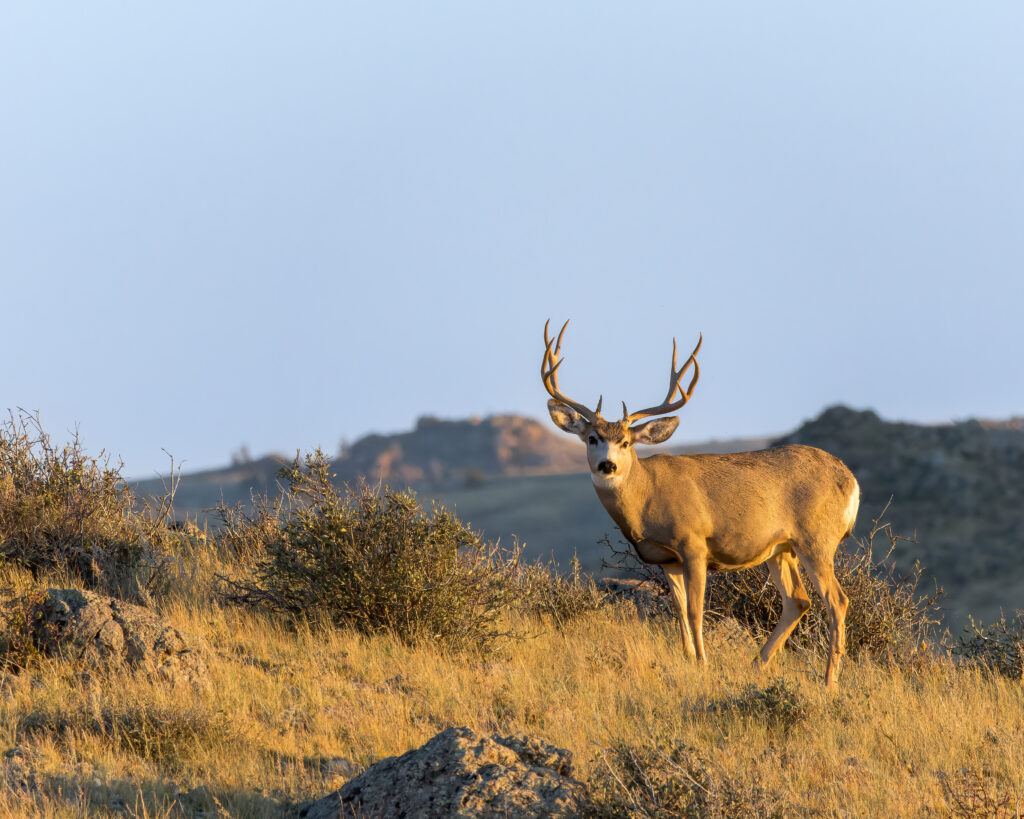
This public comment was submitted to Montana Fish, Wildlife, and Parks regarding its proposed mule deer management guiding principles.
Comments and Recommendations
The proposed guiding principles align closely with PERC’s approach to conservation. We appreciate the emphasis on collaborative partnerships, investing in research, and addressing the biological and social dimensions of wildlife management. We applaud FWP’s efforts to engage a wide range of stakeholders in the plan development process. PERC is ready to be one of them, beginning with the following recommendations.
Commitment to Research and Science-Based Management
PERC supports the dedication to using the best available science to inform management decisions and the commitment to ecological, biological, and social research. Research is needed to identify the interplay of critical issues on mule deer, such as Chronic Wasting Disease (CWD) and habitat loss driven by factors including development and unhealthy forest ecosystems. Investments in research will provide the necessary data to guide management actions and ensure the long-term health of mule deer populations.
Improving Landowner Relations
Private lands provide essential habitat for mule deer. Improving relations between landowners and the public is critical to successful mule deer management. We support efforts to reduce game damage, improve hunter behavior, and increase the presence of enforcement officers to ensure adherence to hunting regulations. State-sponsored programs such as FWP’s Habiat Leases are an excellent example of innovative collaboration with landowners, and we hope to see that same innovation in this new management plan. There is also an excellent opportunity for privately developed and managed programs to pair with FWP’s in-house programs and tools. PERC has developed innovative solutions to wildlife management challenges through research and collaboration, such as our Elk Occupancy Agreements. These agreements have provided wildlife habitat, increased tolerance for wildlife on private land, supported local agriculture, and mitigated the chance of disease spread. We encourage FWP to work with stakeholders, including PERC, to identify privately developed solutions to meet mule deer management objectives.
Managing CWD and Anthropogenic Impacts
Developing comprehensive strategies for managing CWD and minimizing its spread, including increased public information and innovative solutions for private lands, is vital. The next plan should also address the negative impacts of habitat fragmentation, disrupted migration paths, and vehicle collisions.
Enhancing Hunter Opportunities and Economic Benefits
PERC appreciates FWP’s recognition that there are trade-offs between the guiding principles, including maintaining hunter opportunities and recognizing the economic benefits of mule deer hunting to local communities, outfitters, landowners, and conservation funding. The final plan should underscore the importance of sustainable wildlife management for the broader economic well-being of Montanans and acknowledge the role that private lands play in supporting a robust deer population.
Conclusion
PERC supports FWP beginning to develop a forward-thinking and effective Mule Deer Management Plan. We are confident that the MDCAC’s guiding principles will lay the foundation for sustainable and beneficial outcomes for Montana’s mule deer populations and the communities that depend on them. Thank you for your dedication and hard work in this vital endeavor. PERC stands ready to support the successful rewrite of the Montana Mule Deer Management Plan.



